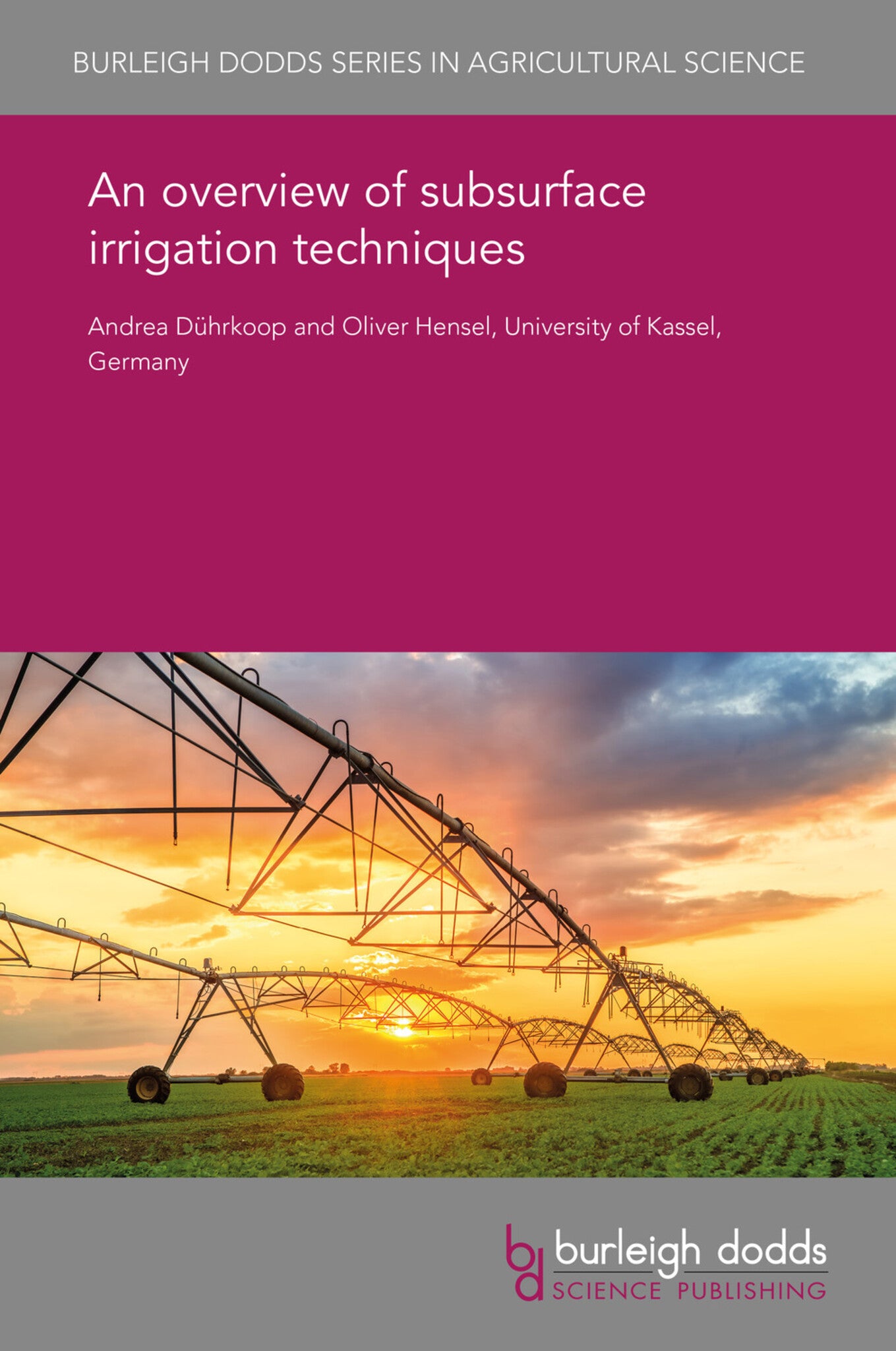We're sorry. An error has occurred
Please cancel or retry.
An overview of subsurface irrigation techniques

Some error occured while loading the Quick View. Please close the Quick View and try reloading the page.
Couldn't load pickup availability
- Format:
-
06 July 2018


TECHNOLOGY & ENGINEERING / Agriculture / Sustainable Agriculture, Sustainable agriculture, TECHNOLOGY & ENGINEERING / Agriculture / Irrigation, TECHNOLOGY & ENGINEERING / Agriculture / Agronomy / Soil Science, Irrigation and water management, Agronomy and crop production

1 Introduction 2 Clay pot (pitcher) irrigation: overview and components 3 Clay pot (pitcher) irrigation: analysis 4 Current research: auto-regulative subsurface pipes with high-tech material 5 SDI: introduction and components 6 Subsurface drip irrigation (SDI): analysis 7 Case study: maize (Zea mays L.) grown using SDI in a Mediterranean climate 8 Porous pipe irrigation 9 Subsurface irrigation with wastewater 10 Model for designing subsurface irrigation systems 11 Conclusion 12 Where to look for further information 13 References



